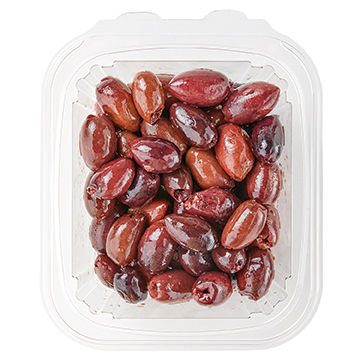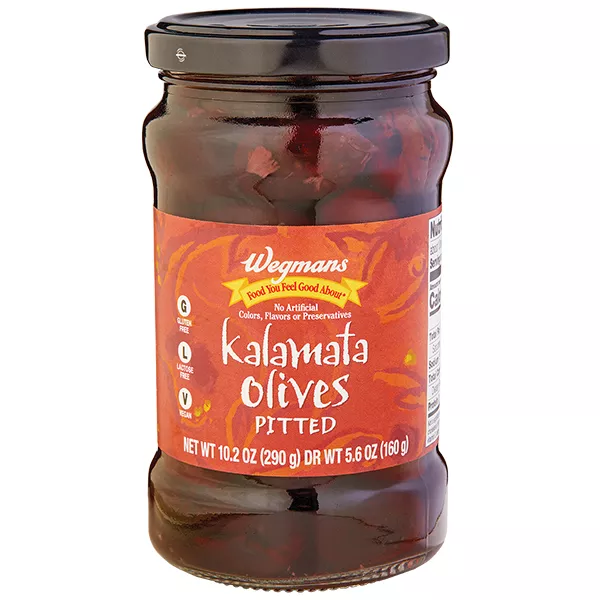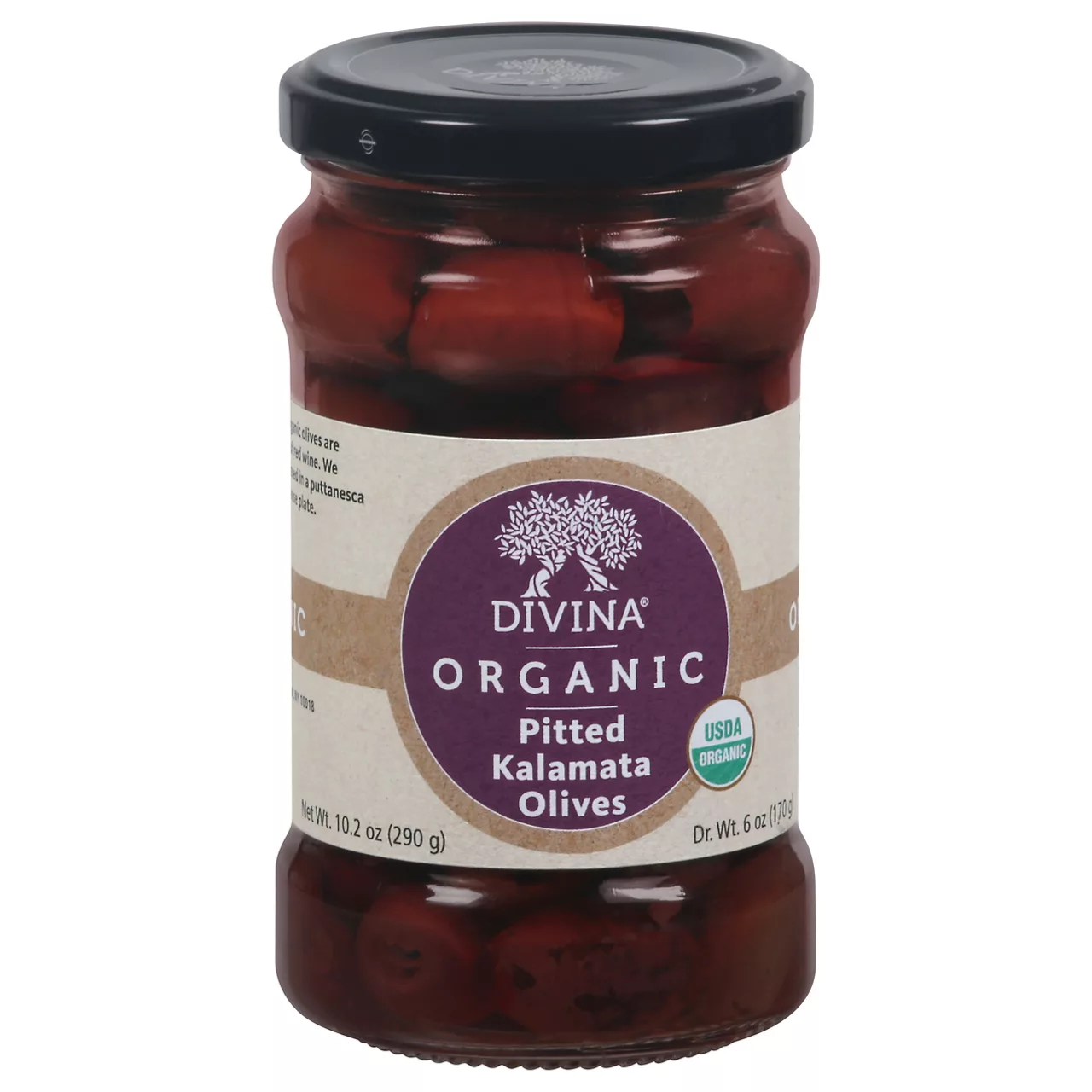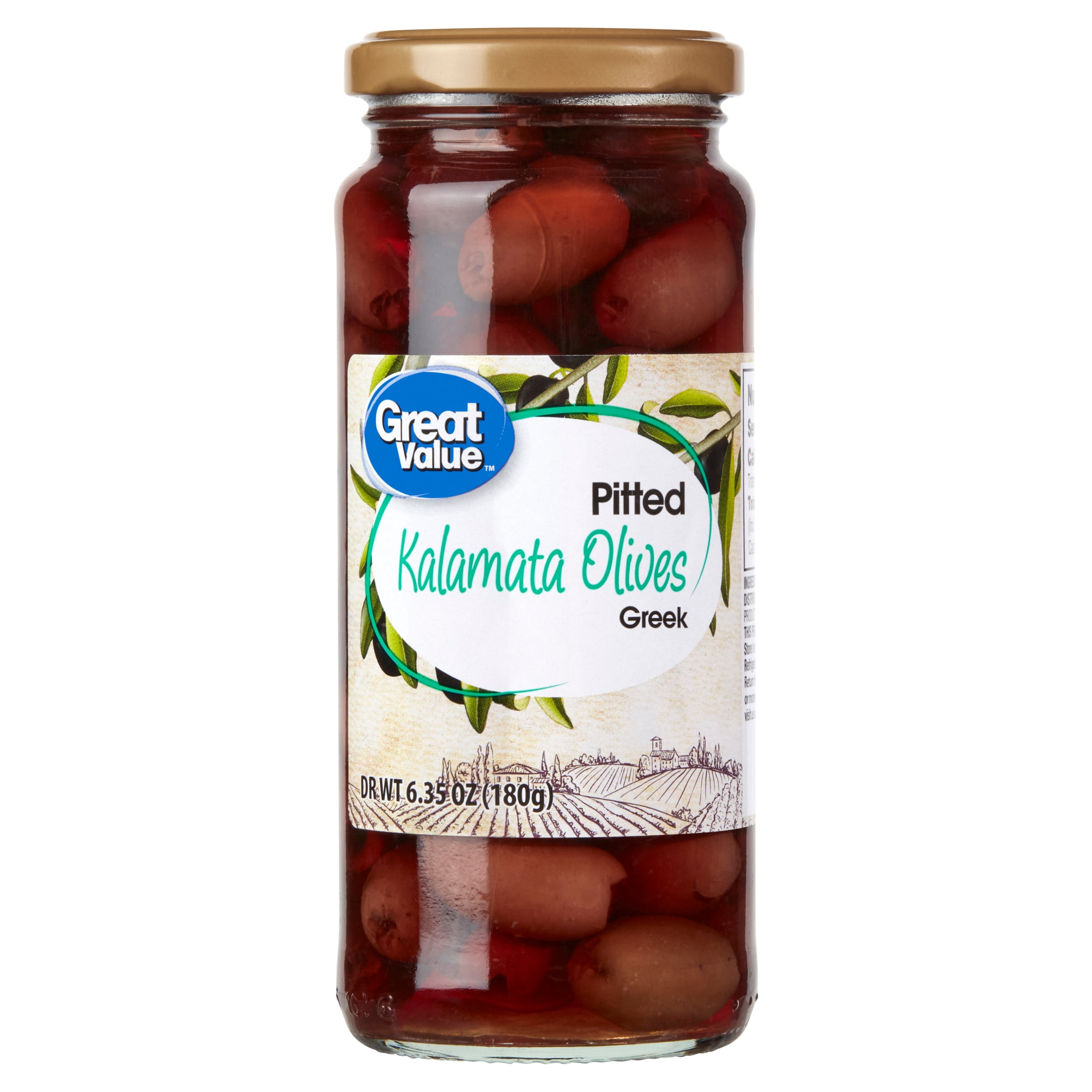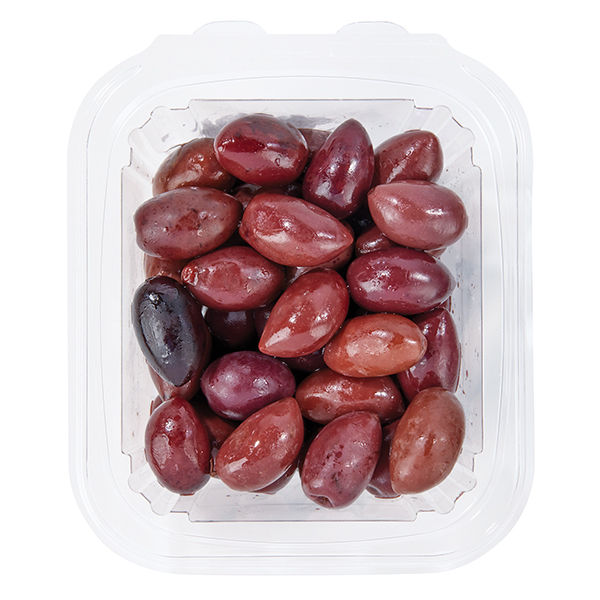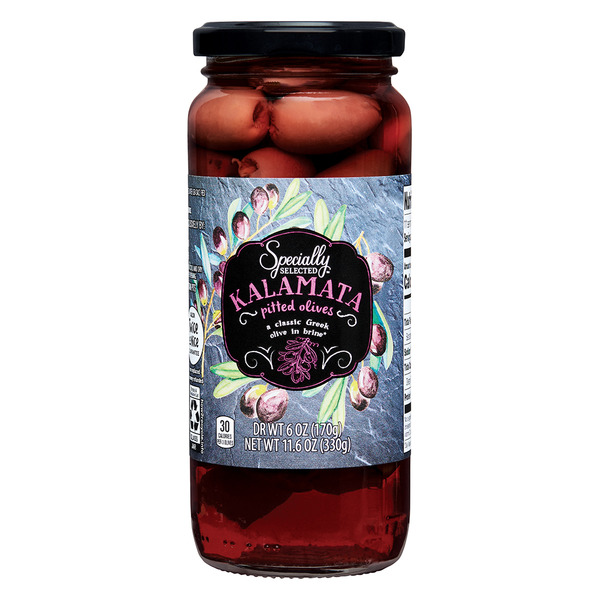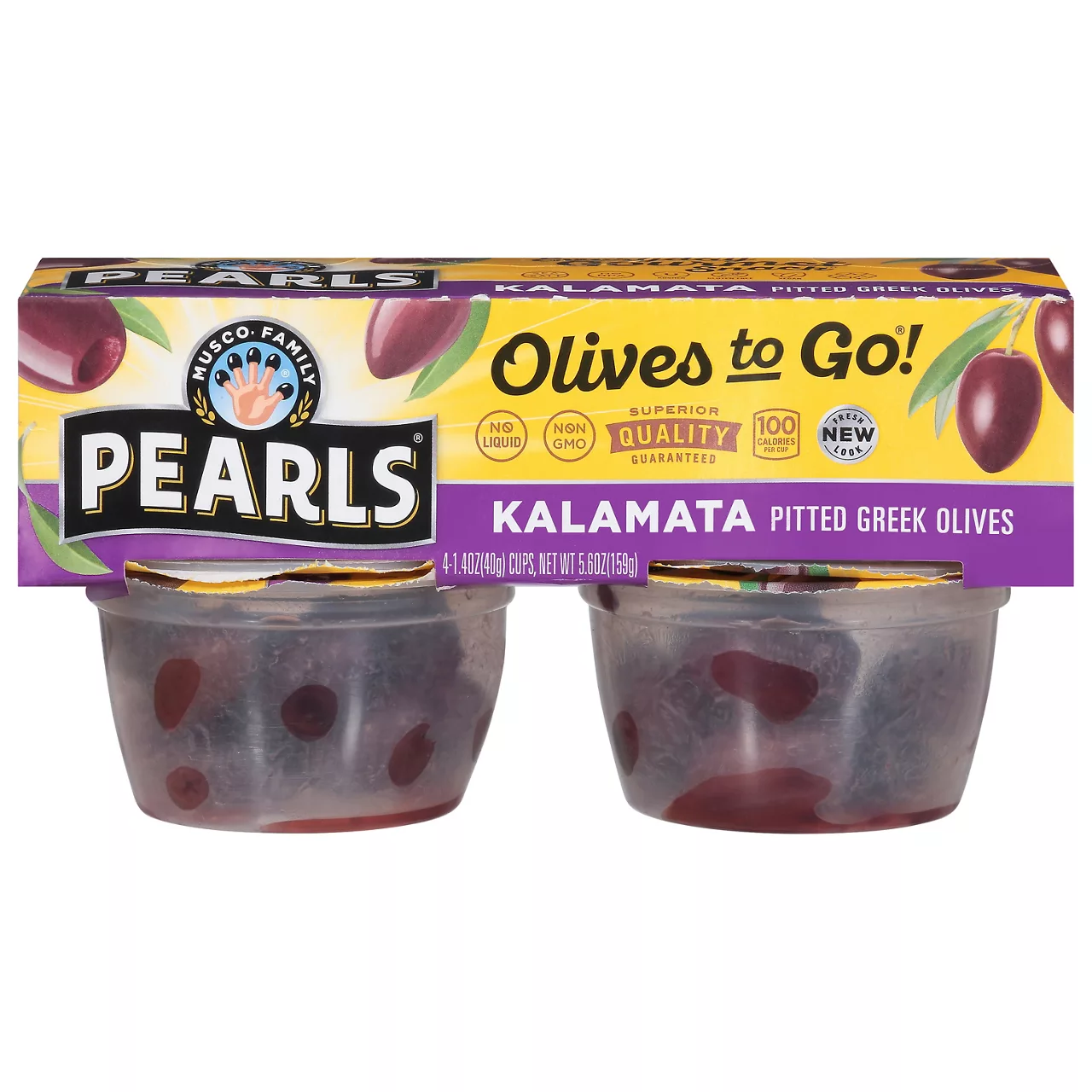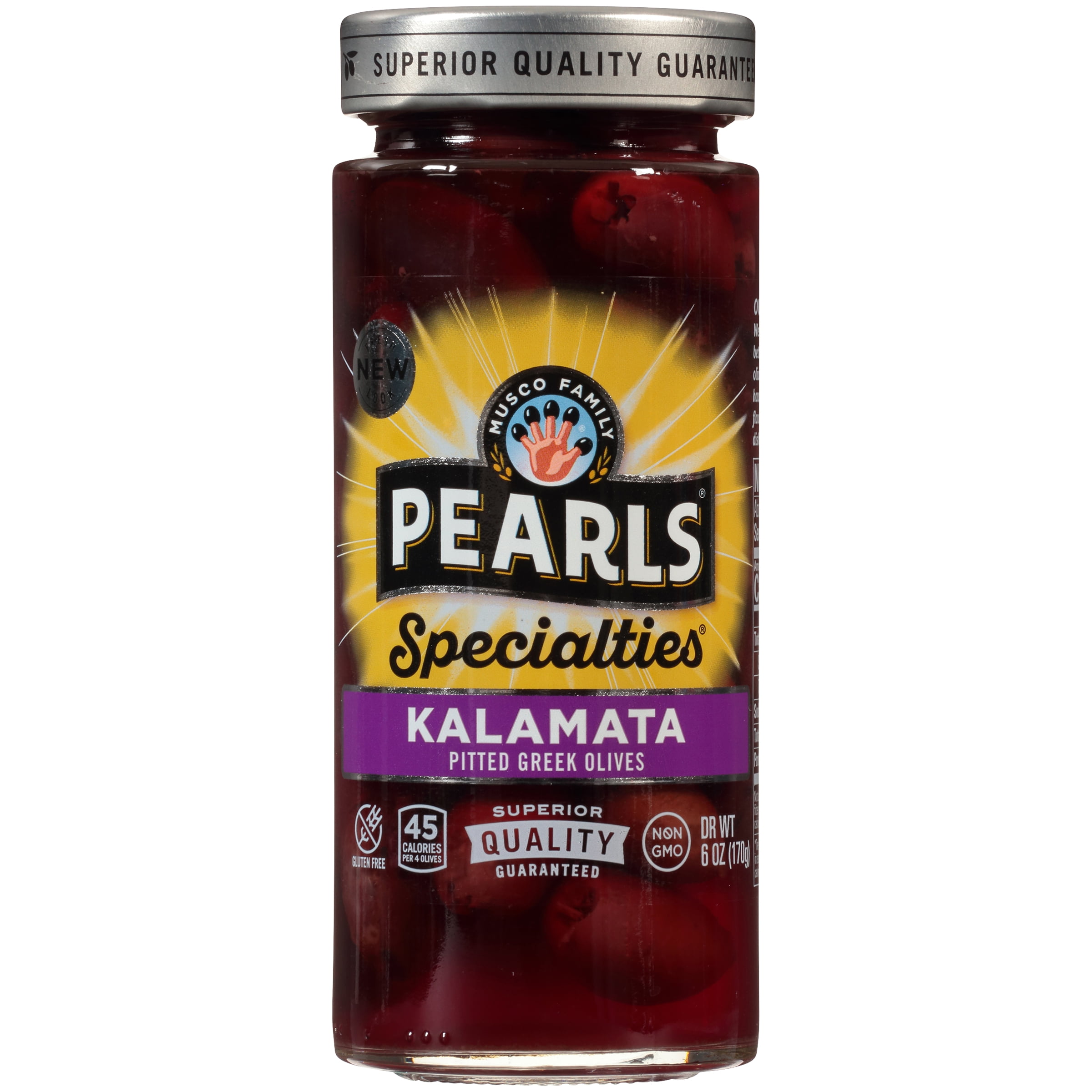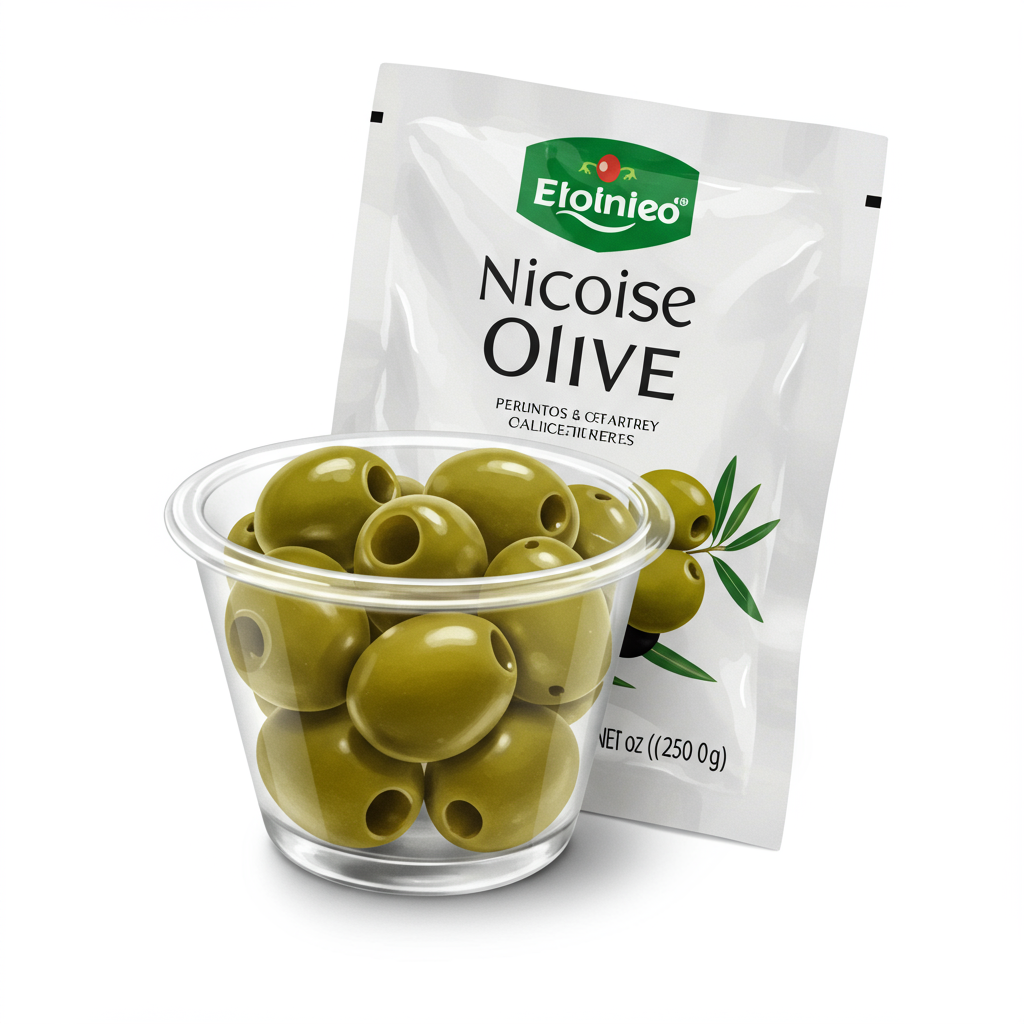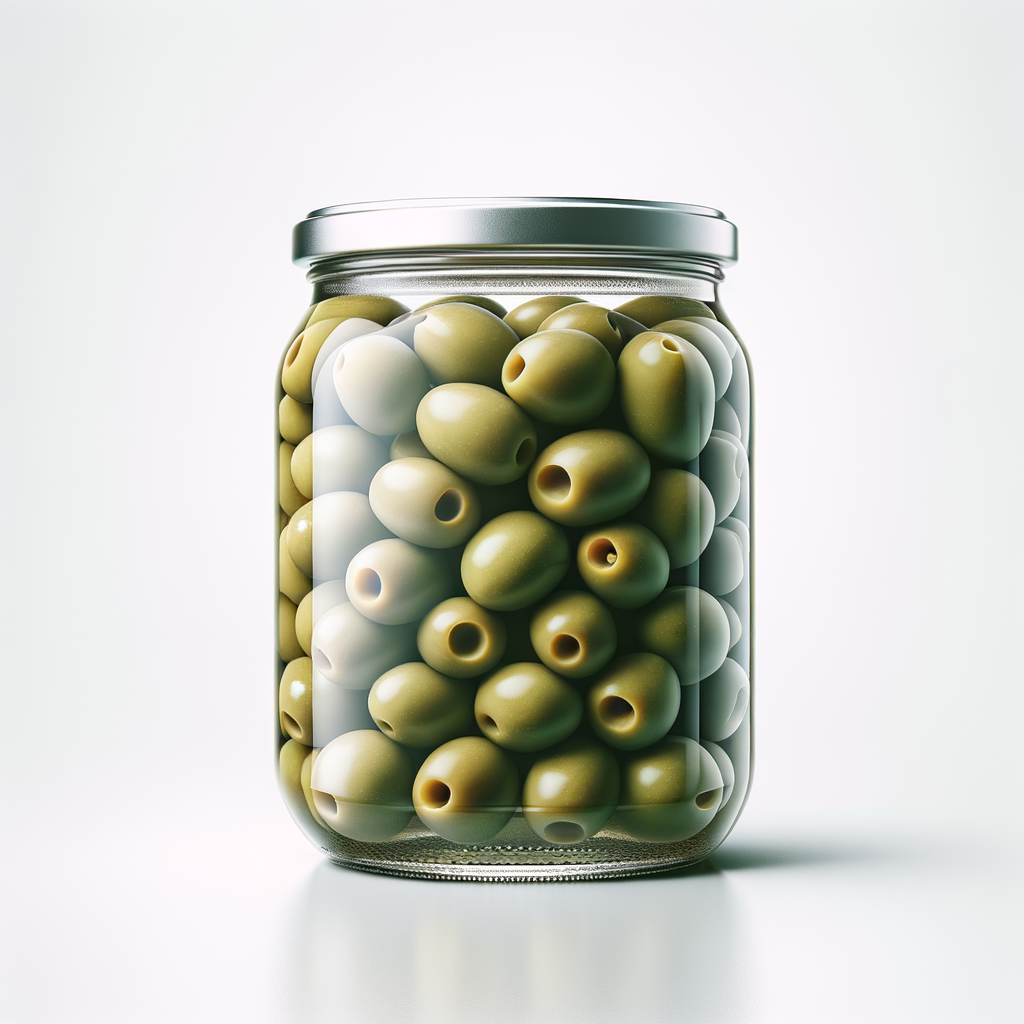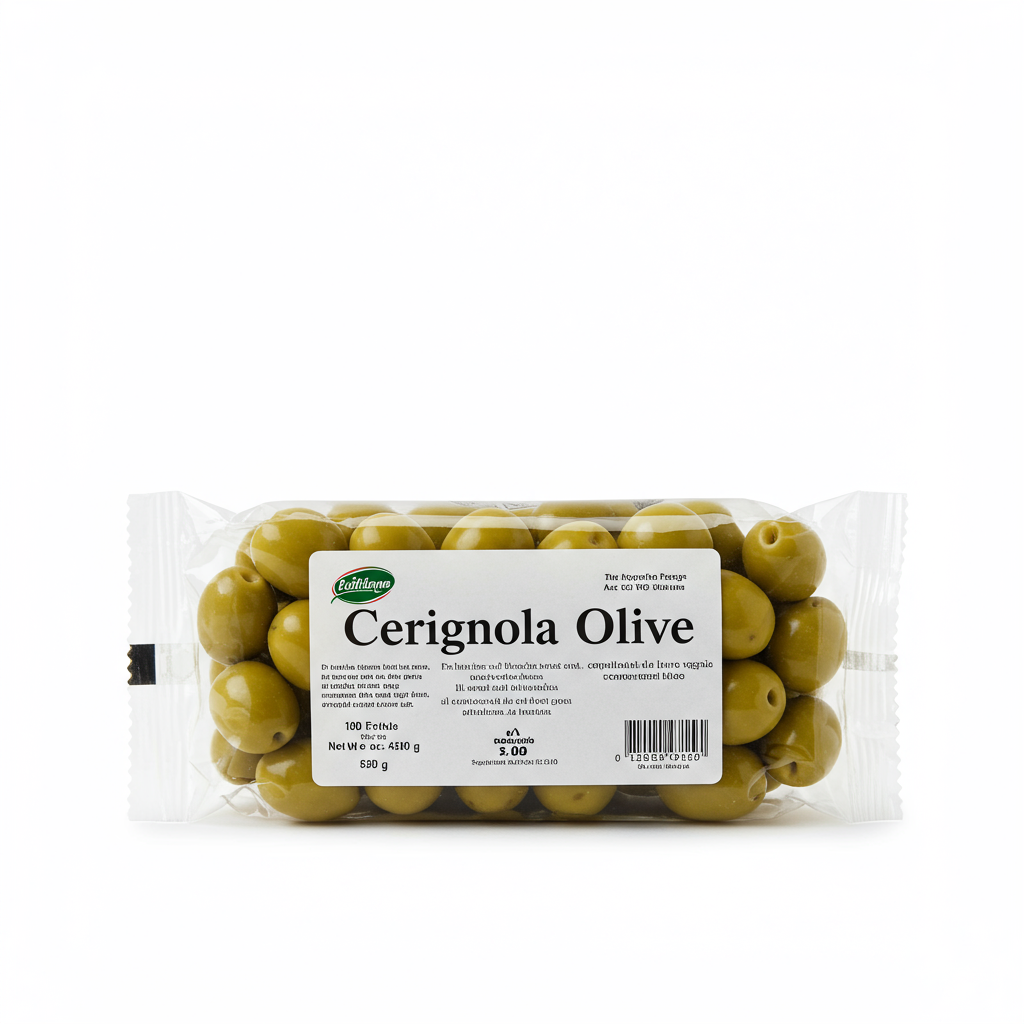SALADS
APPETIZERS
MAIN DISHES
Kalamata Olive
The Kalamata olive is a purple, almond-shaped fruit native to Greece, known for its rich, fruity flavor and tender, meaty texture. Named after the Kalamata region in the southern Peloponnese peninsula, these olives are harvested when fully ripe and are usually preserved in wine vinegar or olive oil, which contributes to their unique taste. High in healthy monounsaturated fats and antioxidants, Kalamata olives provide numerous health benefits, making them a popular choice among health-conscious consumers.
Used both in cooking and as an appetizer or garnish, the versatility of Kalamata olives makes them a favored ingredient in Mediterranean cuisine. Home cooks and consumers can incorporate Kalamata olives into various dishes like salads, pasta, pizzas, as well as Mediterranean-inspired sandwiches and tapenade. Their distinct flavor complements a wide range of ingredients including feta cheese, tomatoes, and fresh herbs, elevating the taste of any meal.
29%
CARBS
71%
FAT
0%
PROTEIN
513 Kalamata Olive Products
Wegmans Kalamata Olives, Pits Removed
Wegmans Food You Feel Good About Kalamata Olives, Pitted
Mezzetta Pitted Greek Kalamata Olives
Divina - Organic - Pitted - Kalamata Olives - Case of 6 - 10.2
Wegmans Whole Kalamata Olives
Great Value Pitted Kalamata Greek Olives
Wegmans Kalamata Olives, Contains Pits
Specially Selected Kalamata Olives
Pearls Olives To Go! Pitted Kalamata Olives, 1.4 Ounce, Pack of 4
Pearls Specialties Pitted Kalamata Greek Olives
Used In 145 Recipes
3
Mediterranean Baked Chicken and Veggies
3
Mediterranean Chicken Delight
1
Hearty Roasted Vegetables and Quinoa Power Bowl
1
Mediterranean Magic: One-Pot Greek Chicken Thighs
5
Rustic Mediterranean Rotini
5
Potato-Chickpea Medley with Tangy Mustard Dressing
3
Pan-Seared Cod with Mediterranean Tomato-Olive Relish
4
Greek Temptation Rice Bowls
Kalamata Olive Is Frequently Used With
Kalamata Olive FAQ
Kalamata olives, usually found in jars alongside other pickled products, are typically used in Mediterranean dishes but can also be eaten on their own. Their rich, dark flavor helps to enhance the taste of various meals, providing both a salty hit and fruity undercurrent that enhances a range of dishes. It's important to be mindful of pitting olives as the pits can be an unpleasant surprise if not removed prior to cooking or serving. To pit kalamatas at home, squish the olive gently with the flat side of a knife, which will easily expose the pit for removal. A common issue faced by consumers is related to the fear of overwhelming dishes with their strong flavor. To prevent this, they should be introduced gradually into the preparation, tasting frequently to hit the right note.
For those wanting to use Kalamata olives to their full potential, they can be chopped up or sliced and used in pasta sauces, salads, or as a pizza topping. Another great idea is to blend them into a paste for spreads or dips. When it comes to enhancing their flavor further, marinating them in a mix of olive oil, lemon zest, rosemary, and crushed garlic for a few hours or overnight does wonders.
Are Kalamata olives the same as black olives?
How can I pit Kalamata olives at home?
Why are my Kalamata olives hard?
Can I eat Kalamata olives right out of the jar?
Why do Kalamata olives have a strong flavor?
Can I use Kalamata olives in place of green olives?
Are Kalamata olives spicy?
What dishes pair well with Kalamata olives?
Can you cook with Kalamata olives?
Are Kalamata olives good for you?
Expiration & Storage Tips
When does kalamata olive expire?
An unopened jar of Kalamata olives is likely to stay good up until the best before date on the package, sometimes even beyond. Once the jar is opened, the olives need to be consumed within two weeks when stored in the fridge. If the olives are kept submerged in their brine, they can last up to several months in the refrigerator. While not common, Kalamata olives can be frozen for up to a year, though it may slightly alter the texture and taste of the olives.
How do you tell if kalamata olive is bad?
Telling if Kalamata olives have gone bad is relatively straightforward. The first thing you'll want to check is the smell. If the olives give off an unpleasant or foul odor rather than their usual tangy smell, they've likely gone bad. The same is true for their taste. If the olives taste sour or off in any way, it's best to discard them. Moreover, if you see any signs of mold or discoloration on the olives or notice any changes in their texture - like if they become too soft or mushy - these could also indicate that the olives have gone bad.
Tips for storing kalamata olive to extend shelf life
• Always store Kalamata olives in a refrigerator once the jar has been opened, ideally in their original jar submerged in their own brine. This keeps them moist and fresh.
• If the jar is too big or cumbersome for your fridge, you can transfer them to a smaller, airtight container, making sure the olives remain submerged in brine or olive oil.
• Before freezing Kalamata olives, drain them, and place them in a freezable bag or airtight container. Just remember, the taste and texture might change slightly when defrosted.
• If you prefer, you can pit the olives before freezing. It doesn't significantly affect the olive's shelf life but makes them more convenient to use after defrosting.
• Always use clean utensils when handling the olives. Edible oils or tiny food particles can contaminate the olive brine and make them spoil faster.
EXPIRES WITHIN
19 - 29
MONTHS
Substitutes
Health Info
Macros
2g
CARBS
5g
FAT
0g
PROTEIN
Allowed on these diets
LOW FAT
HIGH CALCIUM
VEGETARIAN
KETO
PALEO
WHOLE 30
MEDITERRANEAN
LOW CARB
VEGAN
LACTOSE FREE
GLUTEN FREE

